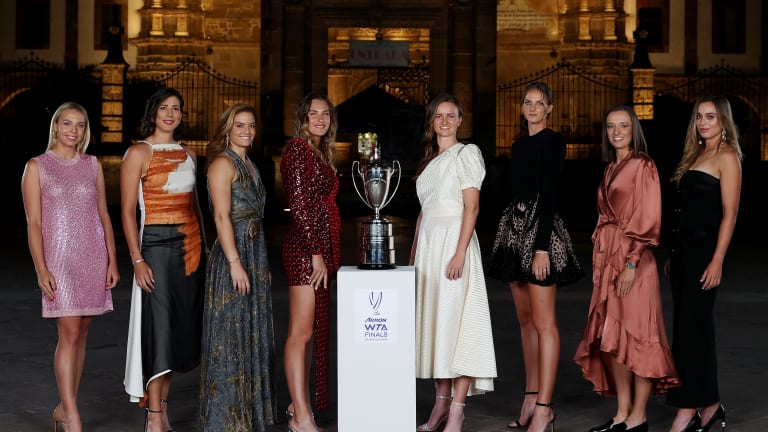WTA Finals
WTA Finals Preview: With a first-time champion guaranteed, embrace the chaos and enjoy the tequila
By Nov 09, 2021WTA Finals
How Elena Rybakina rose to a "challenging" 2025 with WTA Finals victory
By Nov 09, 2025WTA Finals
Elena Rybakina finishes 2025 resurgence by beating world No. 1 Aryna Sabalenka to win WTA Finals
By Nov 08, 2025WTA Finals
WTA Finals Final: Sabalenka vs. Rybakina | Where to Watch
By Nov 08, 2025WTA Finals
Aryna Sabalenka finds the answers against Amanda Anisimova to reach second WTA Finals final
By Nov 07, 2025WTA Finals
Elena Rybakina rallies to defeat Jessica Pegula in WTA Finals semifinals
By Nov 07, 2025WTA Finals
WTA Finals Day 7: Pegula vs. Rybakina and Sabalenka vs. Anisimova | Where to Watch
By Nov 07, 2025WTA Finals
"I feel like I belong": Amanda Anisimova builds on career breakthrough at debut WTA Finals
By Nov 06, 2025WTA Finals
Aryna Sabalenka eliminates Coco Gauff from WTA Finals, joins Jessica Pegula in semifinals
By Nov 06, 2025WTA Finals
WTA Finals Day 6: Pegula vs. Paolini and Sabalenka vs. Gauff | Where to Watch
By Nov 05, 2025WTA Finals Preview: With a first-time champion guaranteed, embrace the chaos and enjoy the tequila
Based on how the 2021 season has played out, the 50th edition of the tour's season-ending championships in Guadalajara is full of possibilities—expected and otherwise.
Published Nov 09, 2021
Advertising
Advertising

The eight contenders pose with the Billie Jean King trophy during Tuesday evening's draw ceremony.
© Getty Images
Advertising

In Guadalajara, Krejcikova is the only 2021 major singles champion vying for the hardware.
© Getty Images